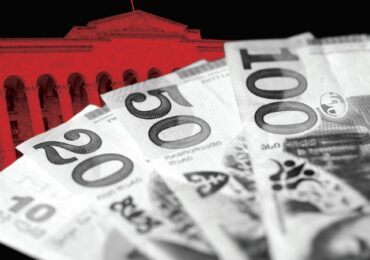In Georgia, rates of school enrolment rates are significantly high for children in all socio-economic groups (99%). However, socio-economic inequalities become more apparent during the process of assessing the quality of education. In order to properly gauge inequality, PMCG analyzed the results of the PISA international exams.
Based on students’ performance on the PISA1 international competence test, overall, 51%, 52%, and 57% of Georgian students fail to reach the basic proficiency levels in science, reading, and math, respectively. In the highest socio-economic quartile, the respective rates are 32%, 32%, and 36%, whereas these figures among the students in the bottom socio-economic quadrant are 68%, 70%, and 76%.
Within the frameworks of the PISA exams, the determination of socio-economic status is based on the combination of the following variables: education level of the student’s parents and employment, possession of basic amenities at home, and access to educational resources. If the pupil is in the bottom quartile of the socioeconomic index, he/she falls under the category of the low socio-economic group.
In Georgia, studies of socio-economic inequality are based on differences between urban and rural areas and public and private schools. Based on the TIMSS research, the results of the pupils illustrate that students from urban private schools tend to score significantly better overall.
“Based on a comparison assessment it is apparent that during the last 8 years, the difference between [education levels in] cities and villages is deepening – in 2017, the difference in results between the cities and villages among fourth grade pupils was 9 points on average, in 2011 the difference was 24 , and 2015 it was 31. In 2007, pupils from public schools scored 38 points less on average in natural sciences exams when compared to private schools. By 2015, the difference had reached 65 points” – states the PMCG research.
It is important to note that in developed countries socio-economic factors have a significant influence on education results as well. For examples, Singapore, one of the highest scoring countries in PISA tests, among the higher socio-economic segment only 2%, 3%, and 2% did not reach the minimum benchmark in science, reading, and math respectively. However, among the lower socio-economic segment, pupils that not display enough knowledge reached 21%, 23% and 17% in the same subjects as mentioned above.
"Forbes Georgia-ის სარედაქციო ბლოგპოსტების სერია "როგორ გამდიდრდა“ და "საქართველო რეიტინგებში".















